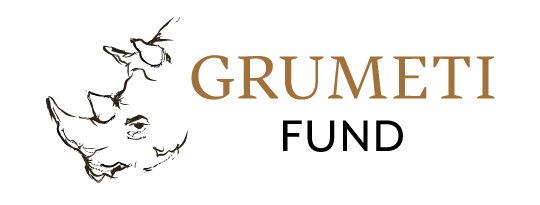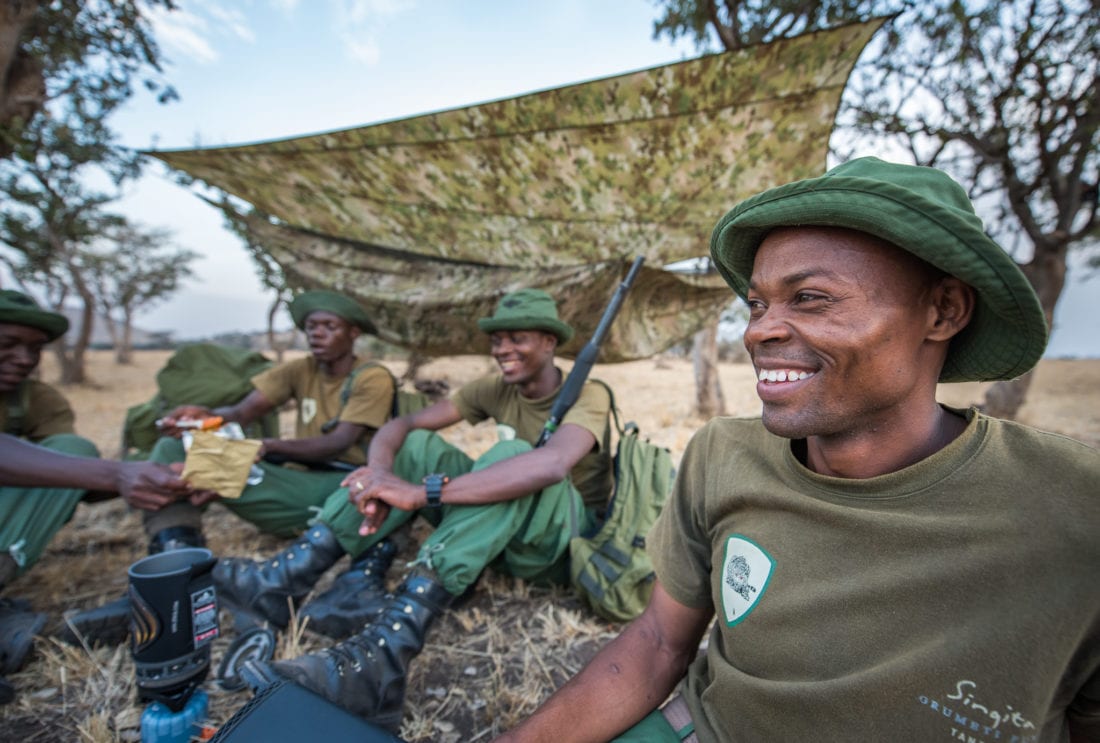How humans and technology are working together to protect the western Serengeti
In front of the Kitaboka Wagora building stands four 3-meters-tall poles full of snares. These are all the snares that the Grumeti Fund scouts have collected in and around the Grumeti concessions in 2019. Some of these snares were found set between trees in the bush awaiting their prey, but some were cut off animals unlucky to have become entangled in the wire noose, freeing them from an unkind death. Poachers set the snares to trap plains game such as zebra, wildebeest, buffalo, topi or impala for the bushmeat trade but snares are indiscriminate killers and often times lion, hyena, giraffe and elephant fall prisoner to these deadly traps. While bushmeat poaching is currently the largest threat to the biodiversity here, elephant poaching for ivory is a constant and increasing concern. Named after a fallen game scout who was shot on duty by a poacher with a poisoned arrow in 2009, the building is the Joint Operations Center, J.O.C. It houses all the Anti-poaching and Law Enforcements Department’s command units.

From within these walls, the Grumeti Fund deploys cutting-edge technology to support its well-trained boots on the ground to combat all poaching threats. Alina, the Operations Room Coordinator and her team, the watchkeepers, monitor the entirety of the Ikorongo-Grumeti Game Reserves complex from their screens. Unlike regular computers, these devices have the Vulcan Inc. program called EarthRanger installed. Alina and the watchkeepers work 24/7 to control radio traffic and collect information from the ground that becomes key in making strategic decisions. For example, EarthRanger can detect movement patterns of all the 30 collared elephants. When an elephant crosses the boundary and enters the village lands, the watchkeepers receive a notification and alert the Human-Wildlife Conflict Mitigation Unit to respond on the ground. The program also captures the movements of all 12 permanent scout patrol camps which help the J.O.C. determine where to deploy its Mobile Patrol Unit (M.P.U).

The apex of the Anti-Poaching Department is the Special Operations Group. The S.O.G. are elite game scouts who are equipped and trained to react quickly to information regarding potential poaching threats anywhere in the Serengeti. The CrossFit trained group is made up of 16 scouts who are deployed in teams of four. At any point in time, one team is permanently stationed in the Rhino Intensive Protection Zone, one is a relief team while the two remaining teams act as the patrol teams. The S.O.G. has a Canine Unit which assists with all tracking needs. The canine unit is made up of rescue dogs from America and their handlers. This four-legged team is extremely effective, and when working in collaboration with the S.O.G. have a success rate of 77%.

The S.O.G works closely with the Joint Intelligence Unit, which is a collaboration between the Grumeti Fund and the Tanzanian Wildlife Management Authority (TAWA). This part of the department is critical in enabling the team to be proactive – stopping poachers before they kill. Working strategically with the other teams within anti-poaching it has been a game-changer for security here.
We further survey the areas we operate in through a network of high-lying Observation Posts, which are manned 24/7. Some of our scouts form the de-snaring teams who patrol 20 kilometres a day scanning the land for animal traps. The de-snaring units comprise of mostly former poachers who have decided to put their knowledge to good use helping anti-poaching efforts. Poaching remains the biggest threat to wildlife in the Serengeti ecosystem and managing 350,000 acres of wilderness is not an easy feat but a solid boots on the ground foundation, coupled with technology and a focused strategy has allowed us to ensure that our limited resources are deployed efficiently and effectively.
To support the Grumeti Fund scouts click here




